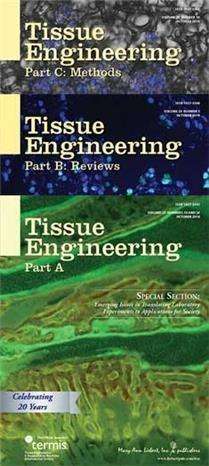New e-Incubator enables real-time imaging of bioengineered tissues in controlled unit

The e-incubator, an innovative miniature incubator that is compatible with magnetic resonance imaging (MRI), enables scientists to grow tissue-engineered constructs under controlled conditions and to study their growth and development in real-time without risk of contamination or damage. Offering the potential to test engineered tissues before human transplantation, increase the success rate of implantation, and accelerate the translation of tissue engineering methods from the lab to the clinic, the novel e-incubator is described in an article in Tissue Engineering, Part C.
"In the article "The e-Incubator: A Magnetic Resonance Imaging-Compatible Mini Incubator" , Shadi Othman, PhD, Karin Wartella, PhD, Vahid Khalilzad Sharghi, and Huihui Xu, PhD, University of Nebraska-Lincoln, present the results of a validation study using the device to culture tissue-engineered bone constructs for 4 weeks. The e-incubator is a standalone unit that automatically detects and regulates internal conditions such as temperature, carbon dioxide levels, and pH via a microcontroller. It performs media exchange to feed the cultures and remove waste products. The current design is compatible with MRI to monitor the constructs without removing them from the incubator. With proper adjustments, compatibility with other imaging technologies including computed tomography (CT) and optical imaging is also possible."
""Calibratable, hands-free tissue development environments are becoming increasingly important for the engineering of implantable tissues," says Tissue Engineering Co-Editor-in-Chief Peter C. Johnson, MD, Vice President, Research and Development, Avery Dennison Medical Solutions of Chicago, IL and President and CEO, Scintellix, LLC, Raleigh, NC. "In this new development, noninvasive imaging modalities are added to the spectrum of sensing and environmental capabilities that heretofore have included temperature, humidity, light, physical force, and electromagnetism. This represents a solid advance for the field.""
More information: The article is available free on the Tissue Engineering website at http://online.liebertpub.com/doi/full/10.1089/ten.tec.2014.0273 until December 5, 2014."
Provided by Mary Ann Liebert, Inc



















